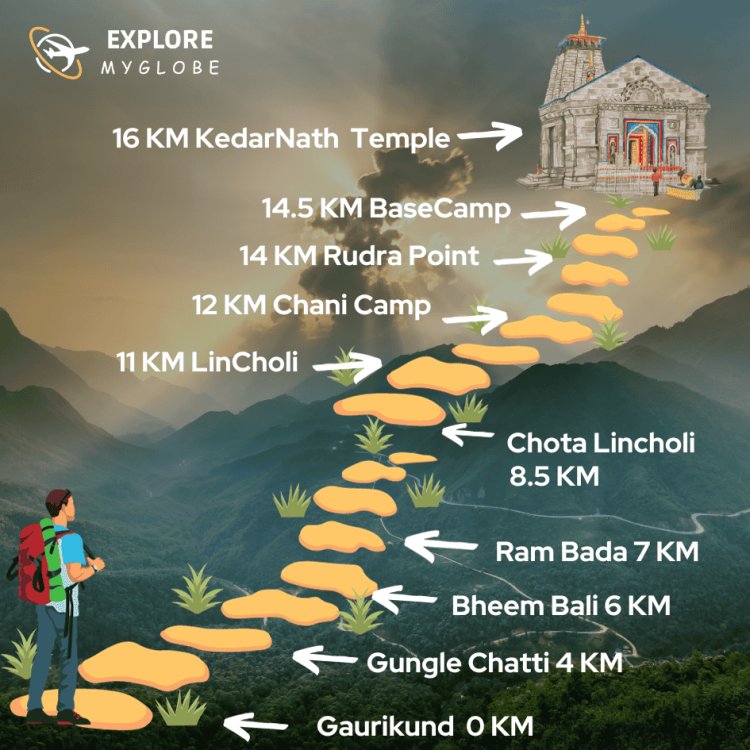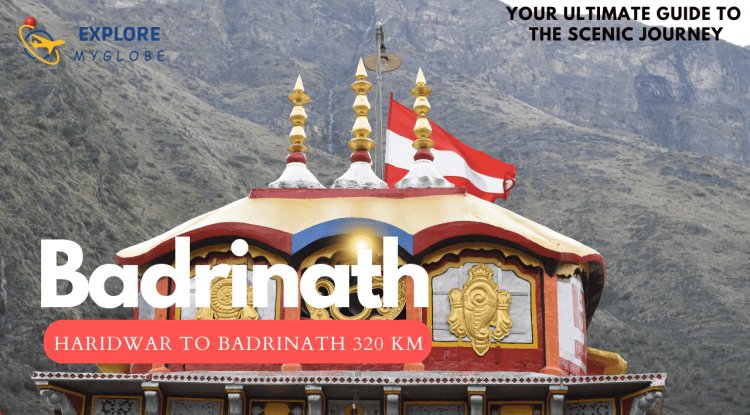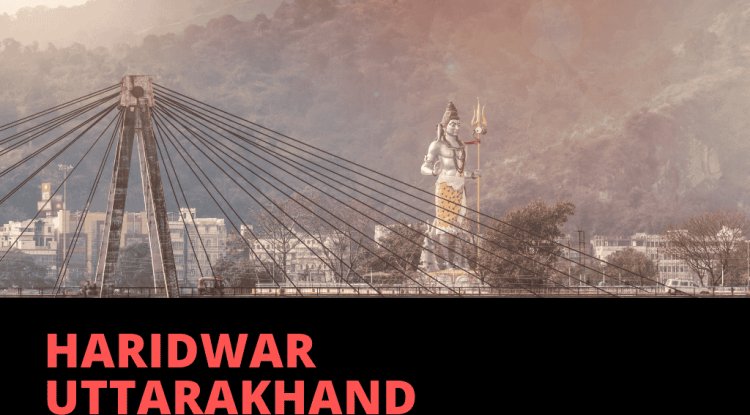Gaurikund to Kedarnath Journey – Tips, Routes, and More
The distance from Gaurikund to Kedarnath in Uttarakhand, India, is approximately 16 to 17 kilometres (about 10 to 11 miles) by trekking. Gaurikund serves as the base camp for the Kedarnath trek, and it's the last motorable point for travellers heading to Kedarnath Temple, one of the Char Dham pilgrimage sites in the Indian Himalayas. The walk from Gaurikund to Kedarnath usually takes 6-8 hours to complete on foot, depending on the trekker's pace and the weather conditions. It's a challenging but scenic trek, and many pilgrims and tourists visit Kedarnath each year to pay their respects and enjoy the region's natural beauty. Please note that road conditions and accessibility may vary, so it's a good idea to check the latest information and local conditions before planning your trip.

Related Articles
Kedarnath Temple is located in the heart of the Garhwal Himalayas in Uttarakhand, India, the journey from Gaurikund to Kedarnath is a spiritual pilgrimage that has drawn devotees and adventure seekers alike for centuries. This arduous trek is a physical feat and a test of devotion and determination. In this article, we will explore the distance and trek time from Gaurikund to the sacred abode of Lord Shiva at Kedarnath.
The Starting Point: Gaurikund
Gaurikund, situated at an elevation of approximately 1,982 meters (6,502 feet) above sea level, serves as the base camp for the pilgrimage to Kedarnath. The town is named after Goddess Parvati, also known as Gauri, the consort of Lord Shiva. It's a place of religious significance and a picturesque destination surrounded by majestic Himalayan peaks and pristine natural beauty.
The Sacred Distance: Gaurikund to Kedarnath
As the crow flies, the distance from Gaurikund to Kedarnath is approximately 16 kilometres (10 miles). Still, the actual trekking distance may vary due to the winding mountainous terrain. The trek follows a steep and winding path that takes you through dense forests, along the banks of the Mandakini River, and up into the higher reaches of the Himalayas. The terrain can be challenging, with steep ascents and descents, narrow paths, and various natural obstacles.
The Time it Takes: Trekking Duration
The trek from Gaurikund to Kedarnath typically takes 6 to 8 hours, depending on various factors such as your physical fitness, weather conditions, and the pace at which you choose to undertake the journey. Here is a breakdown of the trekking time:
- The Initial Stretch: The first few kilometres of the trek from Gaurikund are relatively moderate, with a gradual ascent through forested areas. This section usually takes about 2-3 hours to cover.
- Rough Terrain: As you proceed further, the terrain becomes more challenging. Steep ascents and descents are common, and you must navigate rocky and uneven paths. This section can take around 2-3 hours.
- Rambara and Beyond: The midway point is Rambara, approximately 7 kilometres from Gaurikund. From here, you'll continue your journey towards Kedarnath. The path remains challenging, and you'll pass through lush meadows, often covered in snow. The remaining distance can take another 2-3 hours.
- Kedarnath Temple: After your demanding journey, you will finally reach the sacred Kedarnath Temple, situated at an altitude of approximately 3,583 meters (11,755 feet) above sea level. The spiritual and natural beauty of the destination is a reward in itself.
Pilgrims and trekkers need to be well-prepared before embarking on this journey. Proper trekking gear, warm clothing, and suitable footwear are a must. Additionally, given the high-altitude location, it's crucial to acclimatize and stay hydrated during the trek.
The Gaurikund to Kedarnath trek is not just a physical adventure; it's a spiritual and emotional journey for many. The challenging terrain and the breathtaking natural beauty of the Himalayas make this pilgrimage a unique and transformative experience. Each step you take brings you closer to the divine presence of Lord Shiva at the sacred Kedarnath Temple, making the effort well worth it for those who seek solace and blessings in this holy place.
Gaurikund to Kedarnath FAQs
1. How long is the trek from Gaurikund to Kedarnath, and how difficult is it?
Answer: The walk from Gaurikund to Kedarnath is approximately 16 kilometres long. It can be moderately to strenuously tricky, depending on your physical fitness and the weather conditions. The steep and rugged terrain can make it challenging, but it's a rewarding experience for those prepared.
2. What is the best time for the Gaurikund to Kedarnath trek?
Answer: The best time for the trek is during the summer months, from May to June and then from September to early November. The weather is relatively pleasant during these periods, and the trekking routes are usually open. It's essential to avoid the monsoon season due to heavy rainfall and the winter months due to extreme cold and snow.
3. Are there accommodations available along the Gaurikund to Kedarnath trek route?
Answer: There are basic accommodations like guesthouses and lodges at various stops along the trek route, such as Rambara and Garud Chatti. However, they can get crowded during peak pilgrimage seasons, so it's advisable to book in advance or carry camping equipment if you prefer.
4. What should I pack for the Gaurikund to Kedarnath trek?
Answer: You should pack warm clothing, sturdy trekking boots, rain gear, a first-aid kit, energy snacks, a water bottle, and a good-quality backpack. Additionally, carry any necessary medications, identification, and a torchlight.
5. Are there any restrictions or permits required for the trek?
Answer: There are no permits required for the Gaurikund to Kedarnath trek. However, you must register at Gaurikund before starting the walk for safety and tracking purposes.
6. Should solo trekkers be safe, or should I join a group tour?
Answer: While solo trekking is possible, it's generally safer and more enjoyable to join a group tour or go with experienced trekkers, especially if you're unfamiliar with the terrain or the area's weather conditions.
7. How do I reach Gaurikund, the starting point of the trek?
Answer: You can reach Gaurikund by road from Rishikesh or Haridwar, which are well-connected by train and road to major Indian cities. Regular buses and shared taxis are available for the journey to Gaurikund.
8. Are there medical facilities available along the trek route?
Answer: Basic medical facilities are available at some trekking stops, but carrying a basic first-aid kit and any necessary medications is advisable. In case of emergencies, evacuation can be arranged from Kedarnath.
9. Can I visit Kedarnath during the winter months?
Answer: Visiting Kedarnath during the winter (December to April) is challenging due to heavy snowfall, extreme cold, and limited accessibility. The Kedarnath Temple remains closed during this time.
10. What is the spiritual significance of the Gaurikund to Kedarnath trek?
Answer: The trek is of immense spiritual significance for Hindus. It's believed that this journey cleanses one's soul and earns them Lord Shiva's blessings. The Kedarnath Temple is one of the Char Dham pilgrimage sites and holds a special place in Hindu mythology and spirituality.
11.What is the best way to book accommodations in advance for the trek?
Answer: Booking accommodations in advance for a trek, especially in popular trekking destinations like Kedarnath, is essential to ensure you have a place to stay and to avoid any last-minute hassles. Here are some tips on the best ways to book accommodations in advance for your trek:
Online Booking Platforms:
- Websites like Booking.com, Airbnb, MakeMyTrip, and Agoda provide various accommodation options, from hotels to guesthouses and homestays.
- These platforms often have user reviews and ratings to help you make an informed decision.
Official Websites of Accommodations:
- Many hotels, lodges, and guesthouses have websites where you can check availability and book rooms directly.
- This can sometimes be a cost-effective option, as you can avoid third-party booking fees.
Tour Operators and Trekking Agencies:
- Suppose you're booking your trek through a tour operator or trekking agency. In that case, they often provide accommodation as part of the package.
- This can be a convenient option, as they handle your logistics.
Government Accommodation Facilities:
- In some trekking destinations, government-run guesthouses and lodges are available. You can book these through official government websites or at the location itself.
Homestays and Local Contacts:
- In some remote trekking areas, you might not find formal accommodations. In such cases, homestays with local families can be an excellent option.
- You can inquire about homestays through local tourism offices or your trekking guide if you have one.
Advance Reservation:
- Start your accommodation booking well in advance, especially during peak trekking seasons.
- Many popular trekking destinations have limited accommodation options and can fill up quickly.
Contact Accommodations Directly:
- If you have a specific place, contact them directly via phone or email to confirm availability and make a reservation.
Read Reviews and Do Research:
- Before making a reservation, read reviews and do thorough research to ensure that the accommodation meets your facilities, cleanliness, and safety needs.
Flexible Booking Options:
- Given the unpredictable nature of trekking conditions, consider booking accommodations that offer flexible cancellation policies in case your plans change.
Permits and Permissions: Some trekking destinations require permits to be obtained in advance. Ensure that you have all the necessary permits and permissions before booking accommodations.
Remember that trekking conditions and accommodation options can vary widely depending on the location, so planning and booking is essential. Additionally, always carry a copy of your reservation confirmation and contact details of the accommodation in case you need to reach them during your trek.
12.Is it possible to trek from Kedarnath to Gaurikund?
Answer: You can trek from Kedarnath to Gaurikund, yes. After visiting the Kedarnath Temple, many pilgrims and hikers decided to travel back to Gaurikund. The trip from Kedarnath to Gaurikund is roughly 16 km (about 10 miles) long, and depending on your pace and the state of the trail, it usually takes 5 to 7 hours to finish.
13. Are there any specific clothing requirements for the trek?
Answer: There are specific clothing requirements for a trek to Kedarnath or any high-altitude trek in the Himalayan region. The weather can be pretty variable, and temperatures can drop significantly, even during summer. Proper clothing is essential for your comfort and safety. Here are some clothing essentials:
- Layered Clothing: Layering is essential to staying comfortable during the trek. This allows you to add or remove clothing to regulate your body temperature. Here are the layers you should consider:
- Base Layer: Moisture-wicking, thermal or synthetic base layers to keep sweat away from your skin.
- Insulating Layer: A warm and breathable mid-layer, such as a fleece or down jacket.
- Outer Layer: A waterproof and windproof jacket and pants to protect against rain, snow, and strong winds.
- Trekking Pants: Durable, quick-drying trekking pants or trousers that provide protection and comfort.
- Trekking Shirts: Moisture-wicking, long-sleeved shirts that provide sun protection and comfort.
- Headgear:
- Warm Hat: A warm, insulating hat protects your head from cold temperatures.
- Sun Hat: A wide-brimmed hat to shield your face and neck from the sun.
- Gloves: Insulated gloves or mittens to keep your hands warm.
- Socks: Moisture-wicking and warm socks. Wear a moisture-wicking liner sock underneath a thicker, warm sock for added insulation.
- Footwear: Sturdy, waterproof trekking boots with good ankle support to provide stability and protect your feet from wet and uneven terrain.
- Gaiters: Gaiters help prevent snow, mud, and debris from getting into your boots.
- Rain Gear: A good quality, lightweight rain jacket and rain pants to protect against rain and snow. Make sure they are also breathable.
- Backpack: A comfortable daypack or backpack to carry your essentials. Ensure it has adjustable straps and padding for comfort.
- Sunglasses: UV-protective sunglasses to shield your eyes from harsh sunlight, especially in high-altitude regions.
- Sunscreen and Lip Balm: High SPF sunscreen and lip balm to protect your skin and lips from the intense mountain sun.
- Trekking Poles: Trekking poles can provide extra support and stability, especially during steep ascents and descents.
- Thermal Underwear: Lightweight thermal underwear to wear as a base layer for extra warmth.
- Sleeping Bag: A warm sleeping bag rated for cold temperatures is essential if you plan to camp during the trek.
- Personal Items: Don't forget personal items like a hat, underwear, and personal hygiene items.
Choosing clothing that is comfortable, moisture-wicking, and breathable is crucial to help regulate your body temperature. Also, be prepared for sudden weather changes, and make sure your clothing is waterproof and windproof. Pack light, but be ready for cold nights and intense sun during the day.
What's Your Reaction?





















